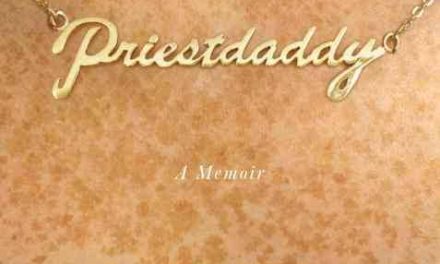For the most part, and despite the fact that it still sees the world in the old liberal/conservative binary, the new MSNBC show “The Cycle” is solid. It is energized, timely, and smart. It has more the the usual amount of ideological diversity, opportunities to make extended defenses of positions (for most TV, at least), and guests and hosts are generally (and politely) challenged in their views. Sadly, however, award-winning author Caitlin Moran was not so challenged on the show yesterday–which is remarkable especially when you consider that she said this about her choice to have an abortion:
Well, I mean it was quite an easy decision really. As I put in the book, I know that I don’t want to be blonde. I know that I don’t want to backpack around India. I know that I don’t want to learn how to ride a horse. And I also know that I don’t want to be a mother again. I’ve already got two children. And a decision that’s so big and life defining as that, I think most women know if they want to do that or not. So I found that decision to have an abortion quite easy really because I just thought am I prepared to put that amount of life and pain and effort into doing a job properly for the rest of my life….And all the friends that I had who’d had abortions did not find that to be [a difficult decision] either.
Seems shocking, right? At the very least, no matter where we come down on this complex and difficult issue, don’t almost all of us understand abortion at least as a tragic and difficult choice? As Obama said at Notre Dame, “we can still agree that this heart-wrenching decision for any woman is not made casually.”
Sadly, Moran is not just trying to sell a book–she represents a significant reality in the world of reproductive choice. In the last decade or so there have been about 1.3 million abortions per year in the United States and about 22% of all pregnancies during that time have ended in abortion.[1] More than 30% of American women have abortions by the time they are 45.[2] While structural poverty has something to do with these very high numbers, places like Sweden and the United Kingdom—despite their large social welfare system for women and children—now have comparable abortion rates to that of the United States. While there might have been a large gap between Europe and the US in the mid-1990s, by the early part of the 2000s this was no longer the case. While in the 20-24 age range the United States still had an abortion rate higher than other comparable countries, rates among American women aged 30 or older were lower than those in many developed countries with energetic social welfare. And the teenage abortion rate in the United States (22 per 1,000 women) was comparable to that of England (23) and lower than that of Sweden (25).[3]
Over half of American women who have abortions have already had at least one abortion. In addition, 61% of women that have abortions in the United States already have at least one child. The abortion rate of babies with Down’s is incredibly high: an astonishing 9 of 10 women who have prenatal children diagnosed with Down syndrome end up aborting the pregnancy.
We must remember that abortion–and especially public policy surrounding abortion–involves a wildly complex set of issues. There is no good analogy to pregnancy, and any discussion of these issues must take seriously women’s bodily integrity. Those who think there is an easy answer to the question of how, precisely, our prenatal children should receive their civil rights via equal protection of the laws haven’t really understood the complexities involved. Nevertheless, we do a disservice to the authenticity of the debate if we operate under false pretenses. We must deal honestly with the fact that many women who choose to have an abortion (along with men who exert various kinds of pressure on women and girls to have abortions) do not see it as an exceptional, heart-breaking choice to be used only in dire circumstances.
[1] Jones RK and Kooistra, K., Abortion incidence and access to services in the United States, 2008, Perspectives on Sexual and Reproductive Health, 2011, 43(1):41-50.
[2] Jones RK et al., Repeat abortion in the United States, Occasional Report, New York: Guttmacher Institute, 2006, No. 29.
[3] Gilda Sedgh, ‘Legal Abortion Worldwide: Incidence and Recent Trends,’ Guttmacher Institute, http://www.guttmacher.org/pubs/journals/3310607.html




Early on, you ask, “don’t almost all of us understand abortion at least as a tragic and difficult choice?” My sense, though, is that the answer to that question is now “no.” I’ve seen some (Pres. Obama and Will Saletan come to mind) continue to imply that abortion should be “safe, legal, and rare.” In some important places, though, that third qualifier is getting a lot of scrutiny and, in many cases, is now rejected as a (moral) failure.
http://www.slate.com/articles/double_x/xxfactor_xxtra/2008/08/unnecessarily_evil.html
You’ve noted here on CMT movement in the overall U.S. numbers *toward* pro-life convictions. I’d say, though, that at the same time, many folks are becoming more thoroughgoing and uncomplicated in their endorsement of choice.
Hi Charlie–
This is a very striking post. I admit I usually try, when teaching about this topic, to stress to students that abortion is a difficult choice, in order to avoid what I take to be the easy stereotype that this is somehow something that people don’t take seriously. I don ‘t know if I can teach it that way again, although I do wonder about the class of people whom this woman knows.
But the stats do make it painfully clear that “routinized abortion” is common. It would be quite amazing to see a panelist in a debate try to ask the President (or any pro-choice politician) about the disconnect between Ms. Moran’s statement and his own. Then again, I have been re-reading MacIntyre this morning, and he contends that modern political orders have a stake in either disguising radical moral disagreement under a rhetoric of consensus or consigning it to some unique category (e.g. “religious belief”). “Safe, legal, rare” is the rhetoric of consensus strategy, but confronted with this, the only recourse would be to Justice Kennedy’s famous assertion of the right to define the meaning of our existence…
[adding final paragraph that somehow didn’t make it into post!:] You’ve noted this in a practical way, via Moran’s anecdotal testimony and current stats on abortion. The _Slate_ article I linked to argues it more theoretically (and notes the official Democratic Party platform). In either case, though, my question is: what does this mean for any dialogue on abortion? Does it–as it seems to–point to a widening gulf that is only likely to further widen?
HTC, there is a widening gulf…but it is only involving a segment of the debate. There are multiple players and groups who contribute, and while you’re right to suggest that those who think like Moran offer little in terms of common ground, there are other groups (who are growing in number) who offer much, much more.
Charlie,
Thanks for the recent stats and the sobering conclusion. Even though the abortion rate has declined and the percentage of those describing themselves as prolife has increased, we have a long way to go. I’m not sure that the hair dying analogy would work for the majority of women getting abortions, despite Moran’s assertions. I would guess that most women find themselves inbetween Moran and the “exceptional, heartbreaking choice.”
I am more and more interested in what we can do to help more women and men make life-giving decisions in the face of seriously difficulties and avoid unplanned pregnancy in the first place.